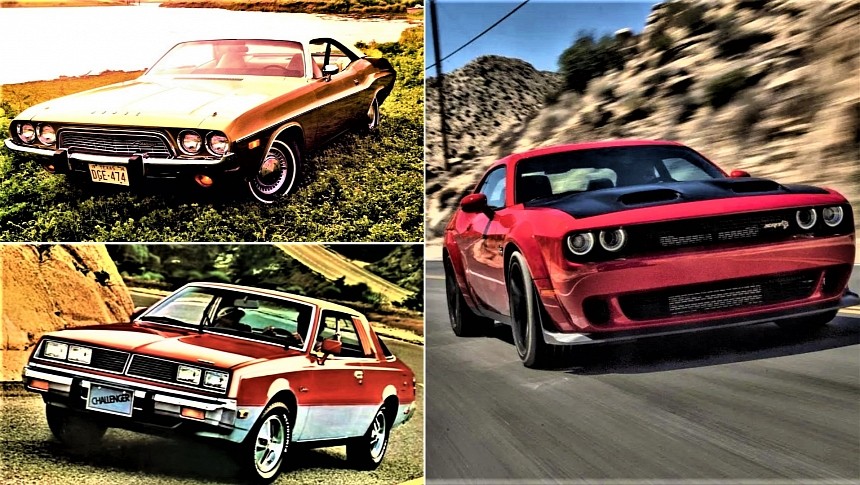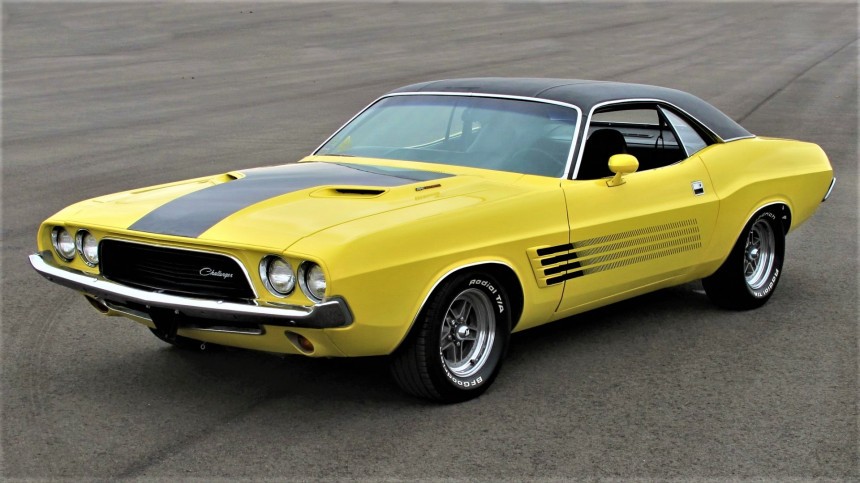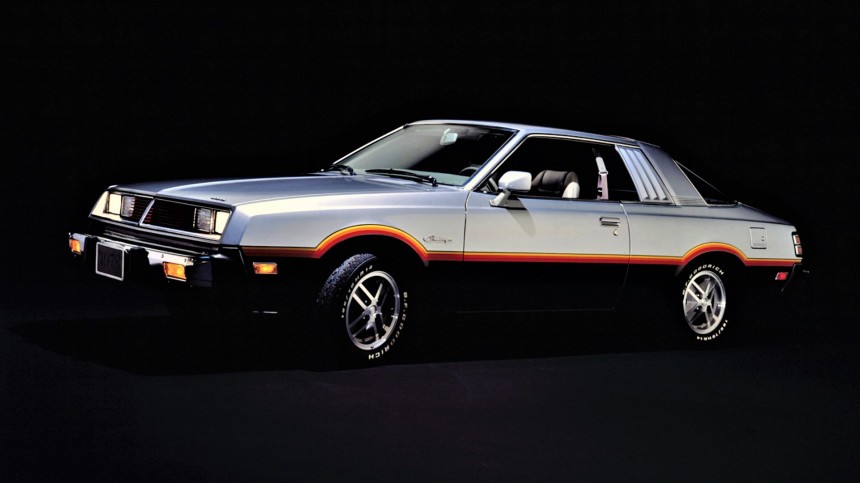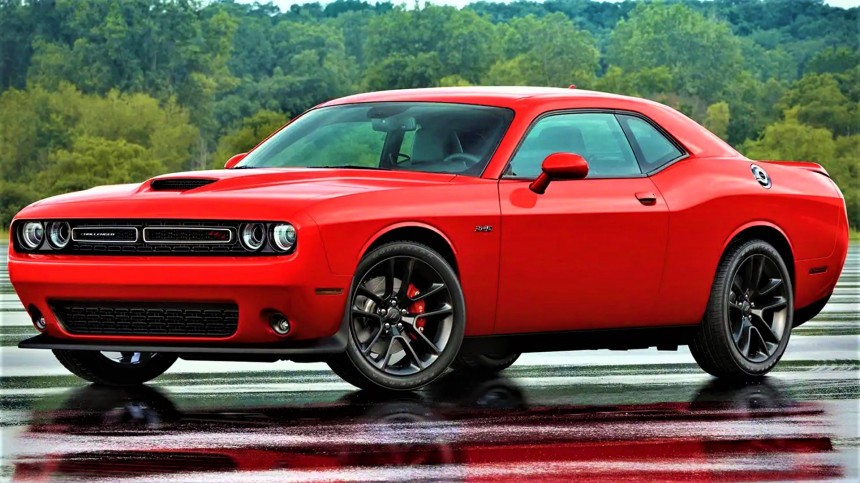American muscle car history wouldn't be complete without the Dodge Challenger – one of the most celebrated Mopar nameplates among enthusiasts. But before it became the tire-smoking icon it is today, it first had to earn its spot in Chrysler's eclectic compendium. Knowing what made these cars so special is a must to become one with the Brotherhood of Muscle.
The sounds of engine roaring and tire-screeching were commonplace in the streets throughout the '60s and '70s. Because it was around this time that the pony car craze was at its peak, thanks to the Ford Mustang's arrival in 1964. Even though Chrysler had already released the first pony car ever made before that in the form of its Plymouth Barracuda, the 'Cuda's success was still overshadowed by the Mustang's popularity.
With the release of rival pony cars like GM's Chevrolet Camaro in 1967, Chrysler had to come up with a new challenger in this booming segment. The thing is, the Dodge Challenger didn't even have its own nameplate at the time. Similar to the famous Toyota Supra's humble origins, the Challenger name also started its life as a special-edition variant of another pre-existing model – the Dodge Coronet. To compete against other high-end pony cars, Chrysler eventually turned the Challenger into its own nameplate in 1970.
Thus, the Dodge Challenger history was born, making way for one of the most powerful pony cars ever made. For over 50 years, this beefy nameplate growled its way into the hearts of owners, earning its spot at the upper echelon of mount muscle. Many consider the Challenger as part, if not the top of the muscle car holy trinity, alongside the Mustang and Camaro; there's a good reason why it makes Brotherhood of Muscle aficionados so giddy.
Despite sharing parts with the Dodge Barracuda, the first-generation Challenger was a different beast altogether. Challengers could produce upwards of 400 horsepower, dwarfing the first-ever pony car by a sizable margin. Featuring Chrysler's E-body platform, Challengers offered almost every power plant in the automaker's arsenal, from the base model 3.7-liter straight-six to the R/T (Road and Track) variant's monstrous 425-horsepower 7-liter Hemi V8.
Driving the top-of-the-line Challenger meant going from 0 to 60 mph in about 6 seconds, beating the Mustangs and Camaros of its era. The Challenger T/A (Trans Am) variant was also the first factory car to implement the different size tire solution, sporting thicker rubber at the rear.
It certainly gave its prestigious nameplate justice by doing what it was meant to do: challenging rival pony cars and besting them. It was a force to be reckoned with on the drag strip and the track, with the T/A variant even being a homologation model that won itself a couple of podium spots in pro-series races. Dodge produced the first-gen Challenger from 1970 to 1974, and by the end of its production run, it had sold over 188,000 units. This marked an early success chapter in the decades-long Dodge Challenger history, but dark days were ahead.
If you're wondering why nobody talks about the second-gen Challenger as much as the original, that's because it barely resembled its predecessor. Stricter regulations and inflation, not to mention the '80s oil crisis, all led to a completely different Challenger that seemed to have shed all its muscle. In fact, it was basically a Mitsubishi Galant coupe carrying the Challenger badge. Being Japanese imports that were reworked to fit Chrysler's inventory meant that these Challengers came with economical engines as well.
The smaller 1.6-liter and 2.6-liter four-cylinder power plant options resulted in underwhelming performance, unbecoming of the Challenger nameplate. In its highest configuration, the Mk 2 Challenger's total power output topped at just a little over 100 horsepower.
Yes, it was still a Challenger but only in essence, with its badge serving as nothing more than a reminder of how great the almighty Mopar icon was during its heyday. To be fair, it was a time when economy car alternatives were favored over the ol' American muscle, so the second-gen Challenger's competitors weren't too crazy on horsepower, either. Regardless, this sheep in wolves' clothing marked a turbulent period in the Dodge Challenger history books. The Challenger successor's production ran from 1978 to 1983. At this point, the glory days of muscle cars seem to have come to a resounding halt. Fortunately for Brotherhood of Muscle aspirants, the Mopar legend never truly died; it simply fell into a deep slumber.
In 2008, the venerated nameplate reemerged better than ever, paving the way for the longest-running model in Dodge Challenger history: the third-generation SRT8. For 15 years, Dodge produced a menagerie of variants stemming from the SRT8 Challengers, including the Scat Pack, Hellcat, and Demon. Its base variant alone, powered by a 3.5-liter V6, already produces 250 horsepower, allowing it to go from 0 to 60 mph in the low fives – faster than the topmost trim of the original Challenger.
The Hellcat RedEye took things up a notch with its Hemi V8 engine paired with the biggest supercharger ever installed on a factory car – 3.5 seconds is all it takes to get from nothing to 60 mph in this bad boy.
As if that wasn't enough, its Demon 170 variant only made the Challenger more ludicrous than it already is by evolving into the world's fastest accelerating non-electric production car, reaching 0 to 60 mph in as little as 1.6 seconds. Unfortunately, all good things must come to an end, with the 2023 Dodge Challenger signifying the end of this prestigious nameplate, at least for its petrol-powered counterparts.
Ending the lineup with the fastest Dodge Challenger ever made doesn't sound too bad, especially when taking its previous generation into account. Turning a trashy six-year production run into a terrific decade of epic Mopar goodness is quite a crazy comeback; a fitting legacy for a Dodge known for pushing past the boundaries of sanity.
With the release of rival pony cars like GM's Chevrolet Camaro in 1967, Chrysler had to come up with a new challenger in this booming segment. The thing is, the Dodge Challenger didn't even have its own nameplate at the time. Similar to the famous Toyota Supra's humble origins, the Challenger name also started its life as a special-edition variant of another pre-existing model – the Dodge Coronet. To compete against other high-end pony cars, Chrysler eventually turned the Challenger into its own nameplate in 1970.
Thus, the Dodge Challenger history was born, making way for one of the most powerful pony cars ever made. For over 50 years, this beefy nameplate growled its way into the hearts of owners, earning its spot at the upper echelon of mount muscle. Many consider the Challenger as part, if not the top of the muscle car holy trinity, alongside the Mustang and Camaro; there's a good reason why it makes Brotherhood of Muscle aficionados so giddy.
First-generation Dodge Challenger (SE/R/T/T/A)
Driving the top-of-the-line Challenger meant going from 0 to 60 mph in about 6 seconds, beating the Mustangs and Camaros of its era. The Challenger T/A (Trans Am) variant was also the first factory car to implement the different size tire solution, sporting thicker rubber at the rear.
It certainly gave its prestigious nameplate justice by doing what it was meant to do: challenging rival pony cars and besting them. It was a force to be reckoned with on the drag strip and the track, with the T/A variant even being a homologation model that won itself a couple of podium spots in pro-series races. Dodge produced the first-gen Challenger from 1970 to 1974, and by the end of its production run, it had sold over 188,000 units. This marked an early success chapter in the decades-long Dodge Challenger history, but dark days were ahead.
Second-generation Dodge Challenger (Mitsubishi Galant Lambda/Plymouth Sapporo)
The smaller 1.6-liter and 2.6-liter four-cylinder power plant options resulted in underwhelming performance, unbecoming of the Challenger nameplate. In its highest configuration, the Mk 2 Challenger's total power output topped at just a little over 100 horsepower.
Yes, it was still a Challenger but only in essence, with its badge serving as nothing more than a reminder of how great the almighty Mopar icon was during its heyday. To be fair, it was a time when economy car alternatives were favored over the ol' American muscle, so the second-gen Challenger's competitors weren't too crazy on horsepower, either. Regardless, this sheep in wolves' clothing marked a turbulent period in the Dodge Challenger history books. The Challenger successor's production ran from 1978 to 1983. At this point, the glory days of muscle cars seem to have come to a resounding halt. Fortunately for Brotherhood of Muscle aspirants, the Mopar legend never truly died; it simply fell into a deep slumber.
Third-generation Dodge Challenger (SRT8/SXT/ R/T/Scat Pack /Hellcat/ Demon)
The Hellcat RedEye took things up a notch with its Hemi V8 engine paired with the biggest supercharger ever installed on a factory car – 3.5 seconds is all it takes to get from nothing to 60 mph in this bad boy.
As if that wasn't enough, its Demon 170 variant only made the Challenger more ludicrous than it already is by evolving into the world's fastest accelerating non-electric production car, reaching 0 to 60 mph in as little as 1.6 seconds. Unfortunately, all good things must come to an end, with the 2023 Dodge Challenger signifying the end of this prestigious nameplate, at least for its petrol-powered counterparts.
Ending the lineup with the fastest Dodge Challenger ever made doesn't sound too bad, especially when taking its previous generation into account. Turning a trashy six-year production run into a terrific decade of epic Mopar goodness is quite a crazy comeback; a fitting legacy for a Dodge known for pushing past the boundaries of sanity.











